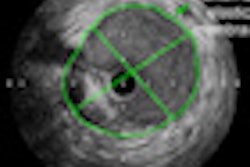
LONDON (Reuters) - Scientists have found a region of DNA that can increase or decrease the high chance of breast cancer linked to a particular gene variant -- a finding that could help doctors keep a closer eye on women most at risk.
The findings were published in the journal Nature Genetics on Sunday along with two other separate studies linking this same region and four others to ovarian cancer.
The breast cancer study centered on women who carry a faulty BRCA1 gene, which significantly raises the risk of developing certain cancers. On average, around 60% of women with a family history of the disease who also carry either a faulty BRCA1 or BRCA2 gene will develop breast cancer. Around 40% of these women will develop ovarian cancer, by the age of 70.
The studies found that if a woman with a BRCA1 fault also carries a "risk version" of a DNA region known as 19p13, her breast cancer risk may be even higher still.
"We've found a DNA region that acts like a volume control -- to turn up or down the risk of developing breast cancer from faults in the BRCA1 gene," said Antonis Antoniou of Cambridge University, who led the work on the first study.
"Our discovery is the first step in a much larger study to identify genetic factors that modify breast cancer risk in women carrying BRCA1 mutations, and ultimately could help us assess the risk for each woman and monitor for the disease."
Breast cancer is the most common cancer among women, with more than a million new cases diagnosed worldwide each year.
In a separate study, the same 19p13 region was also shown to increase the risk, to a lesser degree, of ovarian cancer in women who are not carriers of a BRCA1 fault.
"This is important because it suggests that women who carry certain versions of this DNA stretch could benefit from closer monitoring for both breast and ovarian cancers," said Simon Gayther at University College London, who led that study.
A third study conducting by scientists from Europe, the U.S., Canada, and Australia found four other separate genetic regions also associated with ovarian cancer risk in the general population.
Ovarian cancer is the fifth most common cancer among women in developed countries. An estimated 230,000 women worldwide are diagnosed it each year and it kills around 130,000 each year.
Most women are not diagnosed until after the cancer has spread, because its symptoms are hard to detect, and nearly 70% of those with advanced disease die within five years.
"These latest findings raise the possibility that in the future, women ... who are at the greatest risk of developing ovarian cancer because they carry these newly discovered DNA variants can be identified and given closer surveillance to look for early signs of ovarian cancer when it is most treatable," said Andrew Berchuck, a professor of gynaecologic oncology at Duke University Medical Center, who worked on the study.
"It also suggests that preventive approaches could be targeted toward these women."
By Kate Kelland
Source: link.reuters.com/wug64p, link.reuters.com/xug64p, and link.reuters.com/zug64p
Nature Genetics, online September 19, 2010.
Last Updated: 2010-09-20 16:58:09 -0400 (Reuters Health)
Related Reading
Surgery prevents breast cancers in high-risk women, September 1, 2010
BRCA carriers have higher risk of contralateral breast cancer, April 6, 2010
Breast cancer risk assessment starts with the right questions, March 23, 2010
Copyright © 2010 Reuters Limited. All rights reserved. Republication or redistribution of Reuters content, including by framing or similar means, is expressly prohibited without the prior written consent of Reuters. Reuters shall not be liable for any errors or delays in the content, or for any actions taken in reliance thereon. Reuters and the Reuters sphere logo are registered trademarks and trademarks of the Reuters group of companies around the world.


















